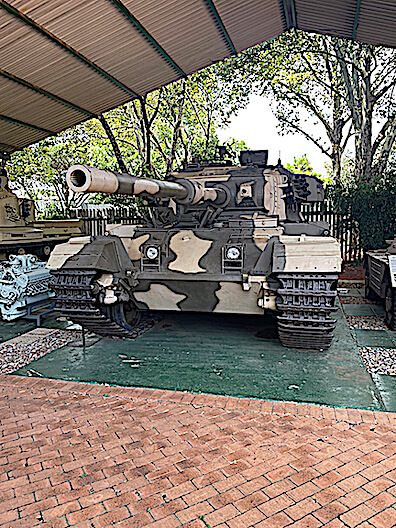An interesting afternoon

We experienced a long power outage after a session of load shedding. As I write this most of our suburb is still without power. One realises how reliant we are on electricity. Charging devices, working and Wi-Fi are so important in today’s day and age.

So I decided to visit the Ditsong National Museum of Military History. It is situated adjacent to the Johannesburg Zoo at 22 Erswold way in Saxonwold. It has been a while since I was last there and I noted some interesting additions to the displays.

Ditsong Museums of South Africa has a portfolio of 8 museums that spread across military history, fauna palaeontology, archaeology, cultural history and anthropology. One can find more information at www.ditsong.org.za.

The war museum as it is fondly known was opened in August 1947 by the Prime Minister of South Africa, Field Marshall Jan Christiaan Smuts. A man who was a soldier, statesman and philosopher. Before the opening little was done to showcase South Africa’s involvement in various conflicts.

Work began in 1940 when an official historian was appointed to document the history of the Union Defence Force. At the opening, Smuts stated”We are gathered here to open what may not unfairly be looked upon as a memorial to the greatest united effort our country has been called upon to produce. Memorials, of course, have more than one use. They serve to remind us of what is past, of great deeds of heroism and sacrifice, they also serve as a pointer, and sometimes a warning to the future.

It is in this sense that the South African War Museum may be regarded as a memorial. It will remind us, I hope of the part we played in the recent great struggle to save civilisation, but also of the horrors, the loss of life and the devastation. It will serve as a warning to us to create a world in which we shall never have to use the weapons of mass destruction we see here today, or the dreadful weapons to follow them”

His reference was to the role South Africa played in World War 2 and provided an explanation for the project. In 1975 the name was changed to the South African National Museum of Military History. For a paltry R 45,00, you could spend a day taking in the beautifully curated displays. My visit however was cut short by a load shedding session but luckily enough I was still able to see a lot and even interact with a few tourists who were enamoured with the museum.

As a museum, they strive to be a memorial for all South Africans who have died in or as a result of military actions and to preserve the nation’s military history for future generations. Uniforms from both sides of the various conflicts are on display as are weapons and other items.
To say that I was impressed is an understatement. The museum has improved considerably since my last visit. The displays have grown and the facilities have increased. There are conference rooms and a library, the gardens are immaculate.
Displays related to my time in the military brought on a wave of nostalgia. A special section dedicated to Field Marshall Smuts is a fitting tribute to an amazing man. Yet the museum and its displays which cover the Boer War right through to the Border War are a silent tribute to those who served. As well as a moving reminder as to the futility of war.

The ME 262 jet on display came out late in World War 2, it is unique in that it is the only surviving model of an aircraft that was thought to be a game-changer but was difficult to fly.
The museum is enjoyed by young and old, there is even a kiddies play section. It’s just so well done and world-class, hence the number of tourists who visit it. The vast array of items, uniforms, tanks, cannons, planes and equipment are in superb condition. It’s a wealth of information and a credit to those who run it. The next time you have “nothing” to do visit it, you will truly be amazed. The only problem I experienced was the fact that they do not like photography in certain halls yet the pictures you could take would be both moving and poignant.


